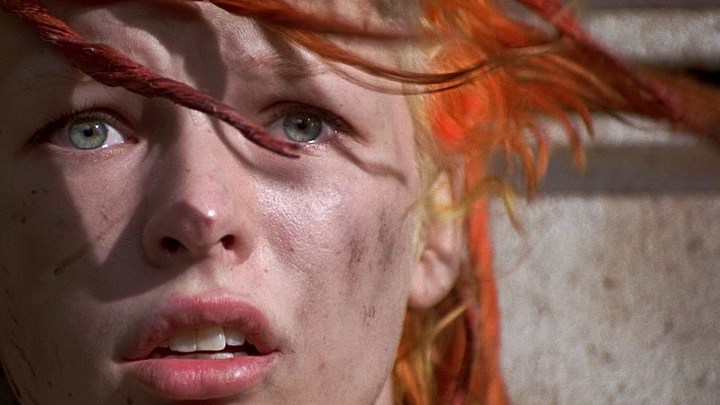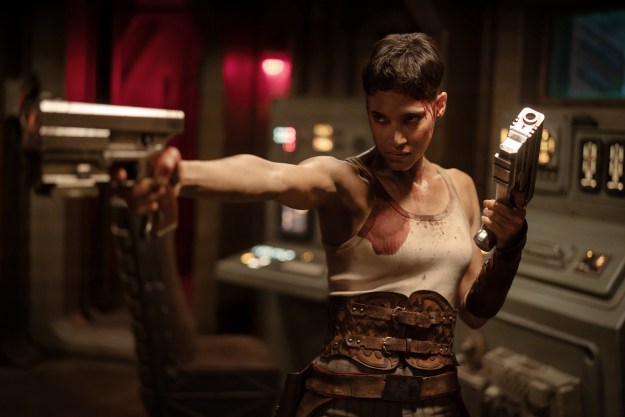
His latest film, Valerian and the City of a Thousand Planets, was a box office bomb, but so was The Fifth Element – and that movie is viewed today through a much different lens. Besson talks about the evolution of performance capture technology that paved the way for Valerian, and explains why his upbringing sans TV and movies helped him innovate as a director.
How did the evolution of visual effects and technology since The Fifth Element help enhance your vision for Valerian and the City of a Thousand Planets?
I think that Valerian was impossible to do before Avatar.
I think that Valerian was impossible to do before Avatar. The Fifth Element was a nightmare to do. There are only 188 effects shots in The Fifth Element and on Valerian there are 2,734, so it’s not even the same world. Since Avatar, James Cameron designed some tools with (FX studio) WETA and now we are able to do whatever we want. And what’s interesting is your imagination is unlimited, which meant that it was the right time to do Valerian.
Cameron pushed performance capture forward. How were you able to tap into that technology?
What’s interesting is two things. Now you can do a (motion) capture with someone wearing a gray sheet and dots, but you can also put in some element of the costume. Like if it’s an alien, for example, you put pieces on it so they capture the real material of the alien. The second thing is that I was shooting with a real camera all the time, even if it goes to CGI later. What I don’t want is to have someone program the movement of the camera — and that’s what they do now — and there’s something artificial in the movement.

What I love about the Steadicam, for example, is at the beginning of this film Princess Lïhio-Minaa wakes up on the planet Mul [pronounced Mule] and when she steps outside, the camera follows her and turns to show her on the beach. That shot was made with the Steadicam with a real actress. We had a brilliant house, an amazing door, and an amazing bed, but for me I have to really direct an actress in the location, so it’s not pure 100 percent CGI-controlled. There’s an element of imperfection and there’s a human movement between the two that makes it real, and that’s what I was looking for.
Where do you draw from creatively to bring these amazing sci-fi spectacles to the big screen?
I put them in a situation where they have 100 percent freedom of creating whatever they want.
Usually for a big sci-fi film in the U.S. from a studio, they will probably hire 100 people for five months because they already have the opening date and they know everything. I did exactly the opposite. I chose six people for two years and they didn’t know each other. The only contact that they had was me through Skype once a week. And I put them in a situation where they have 100 percent freedom of creating whatever they want. For the first year they didn’t even have the script. I just wanted them to explore the 28th Century with aliens, space ships, and the space station. Everything was possible because the spectrum was very, very large ….
To give you an analogy, I just want to spend six months in New York before I can make a film in New York. I want to know about Little Italy and Chinatown and Wall Street. I want to know New Jersey. I want to know everything, and then after I will try to see how I can put my story in this location. So that’s how we approached this thing.
As you were building out this universe, did you think about returning to it for future stories?
No, not especially.
When it comes to this home video release, what does that open up for you in further exploring the process in which this movie was made?
I knew that this film is such a blast that some people could get lost because they’re so much going on — like the meal is so full that you can’t even reach the desert. So, the good thing about DVD now is you can have that second viewing. The second viewing for this film is the best, and then with the third you’re going to discover in the big market and everywhere that there are so many things to watch. It’s the kind of film that you can watch over and over and you will still discover things.

It reminds me a little of the sentiment 20 years ago when The Fifth Element didn’t work so well in theaters and the reviews were bad, but when the DVD arrived and people started to rediscover the film, then it became a cult classic after a couple of years. This film is kind of like pure alcohol. We didn’t share it with water in it, so it’s pretty intense to watch the first time. I really encourage people to go get the DVD because you can see much more on the second viewing for sure.
Although it did take DVD to turn The Fifth Element into a cult classic, what do you think it is about that film that has stood the test of time?
At the time I took some risk to tell the story a different way and to show different people in the film. And when you’re different, the first reaction of people is always skeptical because it’s different. That’s what happens with racism. You know someone not from here is coming in the room. At first, you’re like, “Whoa, that is strange.” And I think it’s the same. As soon as you take risk in a film, you take the risk that you won’t be appreciated right away.
This film is like pure alcohol. We didn’t share it with water, so it’s pretty intense to watch the first time.
Like, for example, Picasso one day made a painting and placed the eyes by the ears and some people were saying that’s a scandal. It’s not how paintings are made. But yes, it is. He just did it. It took years, but now a Picasso is $200 million if you want to buy a small one. And it’s the same even in music sometimes where there’s an artist that we love, but the new album sounds different and strange. But as you hear it over time, then you get used to it and say, “Yeah, I love it.”
Where to do you draw your sense of cinematic style from?
So first, I’m not so sure I have a style. But in a strange way, my parents were scuba divers and I was raised on Greece until I was like 9 years old. I had no shoes, no TV, no music, no internet, no video games, nothing. I played with pieces of wood and rocks. And in a way, I didn’t get polluted by anything for many, many years. So maybe that’s why I have a totally different approach. When I worked on my first film, every day my DP was saying, “No Luc, you can’t do that.” And my answer was always the same, “Why?” He’d explain that movies weren’t made this way. But I’d say, “Let’s try. This is the way that I want to do it, and that’s it.”
What’s funny is that I bought my first TV and VHS machine after my first film came out because this newspaper writer in France wrote that it was obvious I was inspired by these three films, and I had never even heard of them. So I rented them to watch them because I wanted to understand what he was talking about.
Having made so many very different films over the years, how do you view your legacy?
Honestly, I don’t know anything about legacy. But I love to express myself. I love films. When I decide to make a film I’m just as excited as the day you met the woman you want to marry and make 12 kids. I’m a lover. I’m an artist, so I’m super excited and it’s what I want to do and that’s it. I try to transcend this to give this energy and this love. And sometimes people love the film and sometimes they don’t. Sometimes they connect with it 15 years later. That’s not my problem. My thing is just to take it out of me and to offer it to whoever wants to take it.
You’ve had a string of very strong female action heroes across man of your films, dating back to La Femme Nikita. Where does that come from?
It’s the example I have around me. When I was young and my dad left us very early, I was raised by my mom. She was not a super hero at all, but she was decent. She came home every night with money to put food on the table. She never complained. And that strong, working woman is the image I have of a woman. When I watched the James Bond films when I was young and the girls were just crying in the back saying, “James, when are you coming back?” I was like, “Hold on a minute, where did these girls come from? That’s not at all the image I have at home.” So when I started to write films, I was paying attention to both the male actor and the female actresses. I was just trying to write good parts for both.
Valerian and the City of a Thousand Planets is available for pre-order now on 4K Blu-ray, Blu-ray, and DVD, available November 21. The Digital HD version becomes available November 7.


